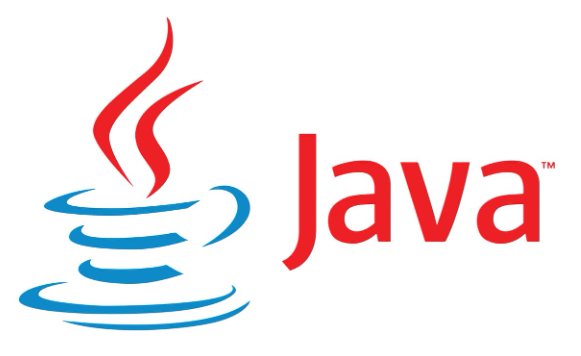Java语言在微服务架构中的应用研究
Java语言在微服务架构中的应用研究
微服务架构是现代软件系统中一种重要的设计模式,它通过将单一的应用程序拆解成多个小型、独立的服务来增强系统的可扩展性、灵活性和可维护性。Java作为一种成熟的编程语言,在微服务架构的实现中发挥了重要作用。本文将从Java语言的特点入手,探讨其在微服务架构中的应用,并通过代码示例来阐明如何使用Java开发微服务。
Java语言的特点与微服务架构的契合
Java是一种面向对象的编程语言,具有跨平台、强类型、垃圾回收等特点。它的生态系统完善,支持多种框架和工具,可以高效地实现微服务架构的需求。Java的这些特点使其在微服务开发中非常有优势,尤其是在以下几个方面:
-
跨平台性:Java通过JVM(Java虚拟机)实现了跨平台,允许开发者将微服务应用部署在不同操作系统上,无论是Linux、Windows还是macOS。
-
丰富的生态系统:Java拥有成熟的开发框架,如Spring Boot、Spring Cloud等,这些框架提供了支持微服务架构的解决方案,包括服务发现、负载均衡、容错处理等。
-
多线程与高性能:Java天生支持多线程处理,能够在微服务架构中有效管理并发请求,提升系统的吞吐量。
-
强类型语言与健壮性:Java的强类型系统使得在开发过程中能够尽早发现错误,这对于微服务系统的复杂性管理至关重要。
微服务架构中的核心概念
在深入探讨Java在微服务架构中的应用之前,首先需要了解微服务架构的几个核心概念。
1. 服务拆分与自治
微服务架构的一个关键原则是将应用拆分成多个独立的小服务,每个服务有自己的数据库和逻辑,且能够独立部署和更新。这些服务通过API进行通信,通常是通过RESTful接口或者消息队列。
2. 服务注册与发现
微服务应用通常包含多个服务实例,服务发现机制能够帮助服务之间互相查找。服务注册与发现是微服务架构的基础组件之一。
3. 负载均衡与容错
微服务架构需要解决负载均衡问题,即如何合理分配请求到多个实例。此外,服务间的容错机制也至关重要,例如熔断器、重试机制等,保证系统的高可用性。
使用Java实现微服务
在Java中,Spring Boot和Spring Cloud是构建微服务架构的最常用框架。下面通过一些简单的示例代码,展示如何使用这些框架实现微服务。
1. Spring Boot 微服务的基础
首先,我们使用Spring Boot创建一个简单的微服务应用。Spring Boot简化了配置,使得开发者可以快速构建独立的、生产级别的Spring应用。
示例:创建一个简单的REST API
package com.example.demo;
import org.springframework.boot.SpringApplication;
import org.springframework.boot.autoconfigure.SpringBootApplication;
import org.springframework.web.bind.annotation.GetMapping;
import org.springframework.web.bind.annotation.RequestParam;
import org.springframework.web.bind.annotation.RestController;
@SpringBootApplication
public class DemoApplication {
public static void main(String[] args) {
SpringApplication.run(DemoApplication.class, args);
}
}
@RestController
class HelloController {
@GetMapping("/hello")
public String sayHello(@RequestParam(value = "name", defaultValue = "World") String name) {
return "Hello, " + name + "!";
}
}
在这个例子中,我们创建了一个简单的Spring Boot应用,包含一个RESTful API,接受name参数并返回一个问候消息。你可以通过http://localhost:8080/hello?name=Java来访问这个服务。
2. Spring Cloud进行服务发现与注册
在微服务架构中,我们常常使用Eureka作为服务注册与发现工具。Spring Cloud提供了对Eureka的良好支持。
示例:配置Eureka服务器与客户端
首先,创建一个Eureka服务注册中心(EurekaServer):
package com.example.eurekaserver;
import org.springframework.boot.SpringApplication;
import org.springframework.boot.autoconfigure.SpringBootApplication;
import org.springframework.cloud.netflix.eureka.server.EnableEurekaServer;
@SpringBootApplication
@EnableEurekaServer
public class EurekaServerApplication {
public static void main(String[] args) {
SpringApplication.run(EurekaServerApplication.class, args);
}
}
然后,在微服务应用中,加入Eureka客户端支持:
# application.yml
spring:
application:
name: hello-service
cloud:
discovery:
enabled: true
eureka:
client:
serviceUrl:
defaultZone: http://localhost:8761/eureka/
在这个配置中,hello-service将会注册到Eureka服务器(假设Eureka服务器运行在http://localhost:8761/eureka/)。
3. 微服务间的通信与负载均衡
微服务通常需要互相调用,可以使用Feign来简化服务之间的HTTP通信,并通过Ribbon实现客户端负载均衡。
示例:使用Feign进行服务调用
package com.example.demo;
import org.springframework.cloud.openfeign.FeignClient;
import org.springframework.web.bind.annotation.GetMapping;
@FeignClient(name = "hello-service")
public interface HelloServiceClient {
@GetMapping("/hello")
String sayHello();
}
然后,在应用中使用HelloServiceClient调用其他服务:
package com.example.demo;
import org.springframework.web.bind.annotation.RestController;
@RestController
public class HelloController {
private final HelloServiceClient helloServiceClient;
public HelloController(HelloServiceClient helloServiceClient) {
this.helloServiceClient = helloServiceClient;
}
@GetMapping("/greet")
public String greet() {
return helloServiceClient.sayHello();
}
}
在上面的代码中,我们使用了@FeignClient注解来声明一个远程服务接口,然后通过HelloServiceClient调用远程的hello-service。
4. 服务容错与熔断器
为了保证微服务系统的稳定性,通常需要使用熔断器模式来处理服务调用失败的情况。Spring Cloud提供了对Hystrix的支持,用于实现熔断器和降级机制。
示例:使用Hystrix实现熔断器
package com.example.demo;
import org.springframework.stereotype.Service;
import org.springframework.web.bind.annotation.GetMapping;
import org.springframework.web.bind.annotation.RestController;
@Service
public class HelloService {
@HystrixCommand(fallbackMethod = "fallbackHello")
public String sayHello() {
// 模拟可能失败的服务调用
if (Math.random() < 0.5) {
throw new RuntimeException("Service failure");
}
return "Hello from HelloService!";
}
public String fallbackHello() {
return "Service is unavailable, please try again later.";
}
}
@RestController
class HelloController {
private final HelloService helloService;
public HelloController(HelloService helloService) {
this.helloService = helloService;
}
@GetMapping("/hello")
public String sayHello() {
return helloService.sayHello();
}
}
在这个例子中,@HystrixCommand注解用于指定服务失败时的降级方法fallbackHello,当服务调用失败时,将自动执行该降级方法。
进一步探讨Java微服务架构中的挑战与解决方案
尽管Java在微服务架构中应用广泛,但在实际开发过程中,仍然会遇到一些挑战。接下来,我们将讨论一些常见的挑战及其解决方案。
1. 微服务的管理与监控
随着微服务数量的增加,如何有效地管理和监控所有服务变得至关重要。每个服务都可能有不同的部署环境、运行状态和日志输出,这给开发者和运维人员带来了极大的压力。
解决方案:使用Spring Boot Actuator与Prometheus
Spring Boot Actuator提供了一系列的端点,能够帮助我们监控和管理应用程序的健康状态、性能指标和日志等信息。我们可以结合Prometheus进行集中监控,Grafana用于可视化展示。
示例:集成Spring Boot Actuator和Prometheus
<!-- pom.xml -->
<dependency>
<groupId>org.springframework.boot</groupId>
<artifactId>spring-boot-starter-actuator</artifactId>
</dependency>
<dependency>
<groupId>io.micrometer</groupId>
<artifactId>micrometer-registry-prometheus</artifactId>
</dependency>
# application.yml
management:
endpoints:
web:
exposure:
include: health,metrics,info
metrics:
export:
prometheus:
enabled: true
通过上面的配置,Spring Boot Actuator会暴露一些基本的监控信息,如健康检查、性能指标等,Prometheus可以定期拉取这些数据,Grafana则可以将监控数据以图表的形式展示。
2. 微服务的安全性
微服务架构涉及多个服务之间的通信,因此,如何确保数据在传输过程中的安全性、认证与授权管理是一个非常重要的问题。在传统单体应用中,安全性通常是在应用层进行管理,而在微服务架构中,每个服务都是独立的,因此需要更加分布式的安全机制。
解决方案:OAuth2与Spring Security
Spring Security是Spring生态中非常强大的安全框架,结合OAuth2协议,能够实现分布式微服务的认证与授权管理。OAuth2协议能够为服务间的通信提供安全保护。
示例:使用Spring Security和OAuth2进行认证与授权
<!-- pom.xml -->
<dependency>
<groupId>org.springframework.boot</groupId>
<artifactId>spring-boot-starter-oauth2-client</artifactId>
</dependency>
<dependency>
<groupId>org.springframework.security</groupId>
<artifactId>spring-security-oauth2-resource-server</artifactId>
</dependency>
# application.yml
spring:
security:
oauth2:
client:
registration:
google:
client-id: YOUR_CLIENT_ID
client-secret: YOUR_CLIENT_SECRET
scope: profile, email
redirect-uri: "{baseUrl}/login/oauth2/code/{registrationId}"
provider:
google:
authorization-uri: https://accounts.google.com/o/oauth2/v2/auth
token-uri: https://oauth2.googleapis.com/token
user-info-uri: https://www.googleapis.com/oauth2/v3/userinfo
在这个示例中,我们通过Spring Security集成OAuth2协议,设置了一个OAuth2客户端,可以通过Google进行认证。在实际应用中,可以根据不同的认证需求,选择不同的OAuth2认证服务器,如自建认证中心、Auth0等。
3. 数据一致性与事务管理
在微服务架构中,数据分布在多个服务中,每个服务都有自己的数据库。如何保证在多个服务间进行数据操作时的数据一致性,是一个棘手的问题。
解决方案:分布式事务与Saga模式
传统的数据库事务(ACID事务)难以适应微服务架构,因为它们通常是跨多个服务和数据库的。在微服务中,常见的解决方案是采用分布式事务模式,例如Saga模式。
Saga模式将一个大事务拆解成一系列的小事务,每个小事务由不同的微服务完成,且每个小事务都需要具备补偿机制,确保在事务失败时能够回滚操作,避免数据不一致。
示例:实现Saga模式
@Service
public class OrderService {
private final PaymentService paymentService;
private final ShippingService shippingService;
public OrderService(PaymentService paymentService, ShippingService shippingService) {
this.paymentService = paymentService;
this.shippingService = shippingService;
}
@Transactional
public void placeOrder(Order order) {
try {
paymentService.makePayment(order.getPaymentDetails());
shippingService.shipOrder(order);
} catch (Exception e) {
// 处理异常,进行补偿操作
throw new RuntimeException("Order processing failed, initiating compensation", e);
}
}
}
在这个示例中,OrderService处理订单的支付与发货操作。如果支付或发货失败,将会触发补偿逻辑来回滚操作,确保数据一致性。
此外,Spring Cloud提供了对分布式事务的支持,可以通过集成像Seata、Atomikos等分布式事务管理工具来实现微服务的事务控制。
4. 微服务的服务网关
在微服务架构中,客户端并不直接访问各个微服务,而是通过一个统一的入口——服务网关(API Gateway)来转发请求。服务网关不仅仅是请求转发的中介,还可以承担一些额外的任务,例如认证、限流、路由控制等。
解决方案:使用Spring Cloud Gateway
Spring Cloud Gateway是一个基于Spring 5、Spring Boot 2和Project Reactor的API网关框架,它为微服务架构提供了一个简单的路由和过滤功能。
示例:配置Spring Cloud Gateway
<!-- pom.xml -->
<dependency>
<groupId>org.springframework.cloud</groupId>
<artifactId>spring-cloud-starter-gateway</artifactId>
</dependency>
# application.yml
spring:
cloud:
gateway:
routes:
- id: hello-service
uri: lb://hello-service
predicates:
- Path=/hello/**
在这个配置中,所有访问/hello/**路径的请求都会被转发到hello-service服务。lb://前缀表示使用负载均衡器来查找服务实例。
Spring Cloud Gateway还提供了丰富的过滤功能,例如身份验证、请求限流、日志记录等,可以在服务网关层面统一管理这些功能。
性能优化与高可用性
在微服务架构中,由于每个服务都是独立的,系统的复杂性增加,因此性能优化和高可用性变得尤为重要。为了保证微服务架构在高负载下的稳定性和响应速度,以下几点是不可忽视的:
1. 服务限流与降级
服务限流和降级是保证系统高可用性的有效手段。通过合理的限流策略,可以避免系统在高并发时出现过载;而通过降级策略,可以在系统出现问题时,提供一个友好的错误提示,而不是让系统崩溃。
解决方案:使用Hystrix进行限流与降级
在前文提到的Hystrix示例中,@HystrixCommand注解可以帮助我们实现服务降级和限流。当服务不可用时,Hystrix会自动调用指定的降级方法,从而保障系统的稳定性。
2. 异步与并发处理
在微服务架构中,处理大量并发请求是一个常见的需求。Java提供了强大的并发处理能力,能够利用异步编程来提高系统吞吐量和响应速度。
解决方案:使用异步任务与消息队列
Java的CompletableFuture和ExecutorService类可以帮助我们进行异步处理。而对于跨服务的任务协调,可以使用消息队列(如RabbitMQ、Kafka等)来异步传递消息,避免同步调用带来的性能瓶颈。
@Async
public CompletableFuture<String> fetchDataFromService() {
// 异步获取数据
return CompletableFuture.completedFuture("data");
}
通过@Async注解,我们可以将方法执行改为异步执行,提升并发处理能力。
微服务的未来:Serverless与Java
随着云计算和Serverless架构的普及,微服务架构也在不断发展。Serverless架构可以进一步简化微服务的部署与扩展,开发者可以更专注于业务逻辑的实现,而无需关心服务器的管理。
尽管Serverless的主要技术栈通常是基于Node.js、Python等,但Java也在逐步进入Serverless领域。通过AWS Lambda、Google Cloud Functions等平台,Java开发者可以使用Lambda函数来实现Serverless微服务。
在未来,Java与Serverless的结合将进一步推动微服务架构的演进,提供更加灵活、高效的解决方案。
总结
在微服务架构的实现中,Java凭借其强大的生态系统、跨平台能力以及高效的并发处理,成为构建微服务应用的重要工具。通过使用Spring Boot、Spring Cloud等框架,开发者能够高效地创建、管理和扩展微服务应用。
关键技术与架构组件:
- Spring Boot简化了微服务的开发与配置,允许开发者快速构建独立且生产级的微服务。
- Spring Cloud提供了服务发现、负载均衡、断路器等基础组件,帮助开发者构建可靠、可扩展的微服务架构。
- **服务网关(Spring Cloud Gateway)**为微服务提供了统一的入口,并能实现路由、认证、限流等功能。
- **分布式事务(Saga模式)**通过将大事务拆分为多个小事务,结合补偿机制,解决了微服务间的数据一致性问题。
- **监控与日志(Spring Boot Actuator + Prometheus)**使得微服务的运行状态和性能指标能够集中监控,为运维提供便利。
- **安全性(OAuth2 + Spring Security)**提供了分布式架构下的统一认证与授权方案,保障微服务间的安全通信。
面临的挑战:
- 管理与监控:微服务架构中服务众多,必须有效管理和监控服务的健康与性能。
- 安全性:服务间通信的安全性需要专门的认证与授权机制,避免数据泄露或滥用。
- 数据一致性:分布式事务和Saga模式是确保多服务间数据一致性的有效方式。
- 性能优化:通过限流、异步处理等手段,可以有效提升系统的吞吐量和响应速度。
未来发展:
随着Serverless架构的崛起,Java与Serverless的结合有望为微服务架构提供更加灵活和高效的解决方案。开发者可以更专注于业务逻辑的实现,减少对底层基础设施的关注。
总之,Java在微服务架构中不仅能够满足当前的需求,还能够随着技术的进步持续优化与发展,成为构建高效、可靠微服务的核心语言之一。

